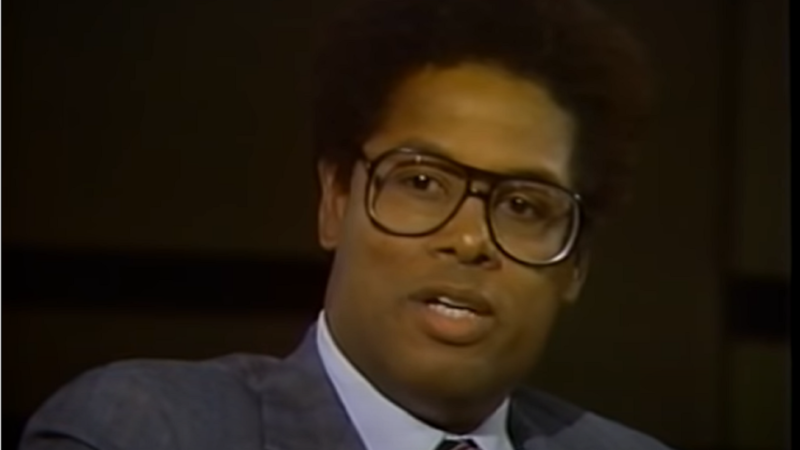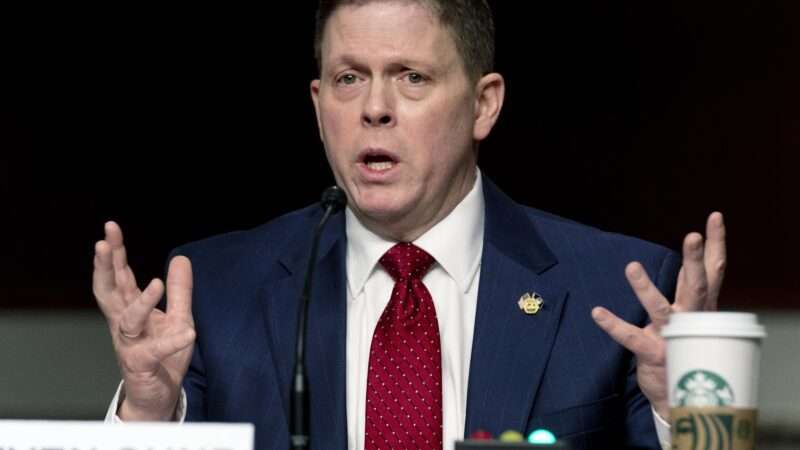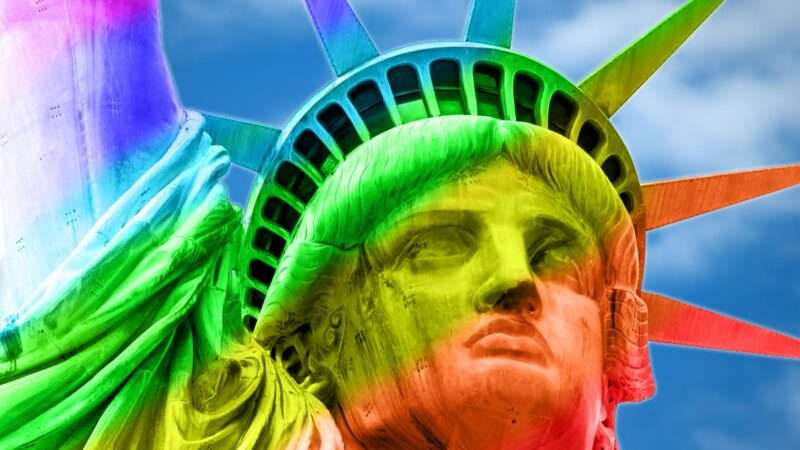The day before last month’s deadly riot at the U.S. Capitol, an FBI bulletin warned that some of President Donald Trump’s supporters were calling for violence to prevent Joe Biden, then the president-elect, from taking office. The bulletin cited “specific calls for violence” in an online discussion thread.
“Be ready to fight,” the thread said. “Congress needs to hear glass breaking, doors being kicked in, and blood from their BLM and Pantifa slave soldiers being spilled…. Get violent. Stop calling this a march, or rally, or a protest. Go there ready for war. We get our President or we die. NOTHING else will achieve this goal.”
The FBI shared that bulletin, which originated from its office in Norfolk, Virginia, with a joint terrorism task force that included representatives of the Capitol Police and D.C.’s Metropolitan Police Department (MPD). It was also posted on the Law Enforcement Enterprise Portal, which is accessible to law enforcement agencies across the country, and emailed to the MPD and the Capitol Police.
But who reads email anymore? During a joint hearing before two Senate committees yesterday, Acting MPD Chief Robert Contee said he never saw the FBI warning. The email account to which it was sent is not monitored “24 hours a day,” he said, and a message sent to that address would not “generate an immediate response.” He suggested that the FBI should have called him instead: “I would certainly think that something as violent as an insurrection in the Capitol would warrant, you know, a phone call or something.” Former Capitol Police Chief Steven Sund, who resigned after the riot, said he first heard about the FBI bulletin on Monday.
Contee and Sund blamed their inadequate preparation for the violence at the Capitol on a failure of intelligence. Former House Sergeant at Arms Paul Irving and former Senate Sergeant at Arms Michael Stenger—both of whom, like Sund, resigned after their spectacular failure to protect the Capitol and members of Congress—likewise said they had no way of anticipating the riot because the “intelligence community” (including the FBI) failed to inform them of plans for a coordinated attack. Instead, they expected the usual violence between protesters and counterprotesters as thousands of angry Trump followers streamed into Washington to “stop the steal” at the president’s behest.
“If they were finding [evidence] that this was a coordinated attack that had been coordinated among numerous states for some time in advance of this, that’s the information that would have been extremely helpful to us,” Sund said. “That type of information could have given us sufficient advance warning to prep, plan for an attack such as what we saw.”
That defense is complicated not just by the overlooked FBI bulletin but also by a January 3 Capitol Police intelligence report. “Due to the tense political environment following the 2020 election, the threat of disruptive actions or violence cannot be ruled out,” said the 12-page memo, parts of which were obtained by The Washington Post. “Supporters of the current president see January 6, 2021, as the last opportunity to overturn the results of the presidential election. This sense of desperation and disappointment may lead to more of an incentive to become violent. Unlike previous post-election protests, the targets of the pro-Trump supporters are not necessarily the counter-protesters as they were previously, but rather Congress itself is the target on the 6th.”
The memo noted “a worrisome call for protesters to come to these events armed” and “Stop the Steal’s propensity to attract white supremacists, militia members, and others who actively promote violence.” It said “there is the possibility that protesters may be inclined to become violent,” creating “a significantly dangerous situation for law enforcement and the general public alike.”
The Post says that memo “does not appear to have been shared widely with other law enforcement agencies, including the FBI.” Sund, who said he did not know about the FBI’s bulletin until the day before he testified, does not seem to have made much of an effort to keep the FBI apprised of his own agency’s assessment. He told the Post “it would be inappropriate to publicly discuss an internal intelligence memo, given its sensitive nature and the risk of revealing sources and methods.”
In retrospect, these documents were unmistakable harbingers of what actually happened. While it can be difficult to distinguish between macho posturing and concrete plans of violence, the fact that some people who planned to attend the “Save America” rally were arguing that peaceful protest was inadequate to the occasion, combined with the clear warning that “Congress itself is the target,” should have prompted the people charged with protecting the Capitol to reevaluate their expectations.
The Capitol Police intelligence assessment “indicated that the January 6th
protests/rallies were ‘expected to be similar to the previous Million MAGA March rallies in November and December 2020, which drew tens of thousands of participants,'” Sund testified (contradicting White House Press Secretary Kayleigh McEnany’s risible claim that the November rally attracted “more than one MILLION” people). “The assessment indicated that members of the Proud Boys, white supremacist groups, Antifa, and other extremist groups were expected to participate in the January 6th event and that they may be inclined to become violent. This was very similar to the intelligence assessment of the December 12, 2020, MAGA II event.”
Even while noting the possibility of violence, the Capitol Police minimized the danger. According to Sund, its January 4 daily intelligence report “assessed ‘the level of probability of acts of civil disobedience/arrests occurring based on current intelligence information’ as ‘remote’ to ‘improbable’ for all of the groups expected to demonstrate on Wednesday, January 6, 2021. In addition, the daily intelligence report indicated that ‘the Secretary of Homeland Security has not issued an elevated or imminent alert at this time.'”
Passing the buck to the Department of Homeland Security, like Sund et al.’s general indictment of the “intelligence community,” seems to be aimed at diffusing responsibility for a colossal security failure. When everyone screws up, no one really has to shoulder the blame.
from Latest – Reason.com https://ift.tt/3soCjDg
via IFTTT





